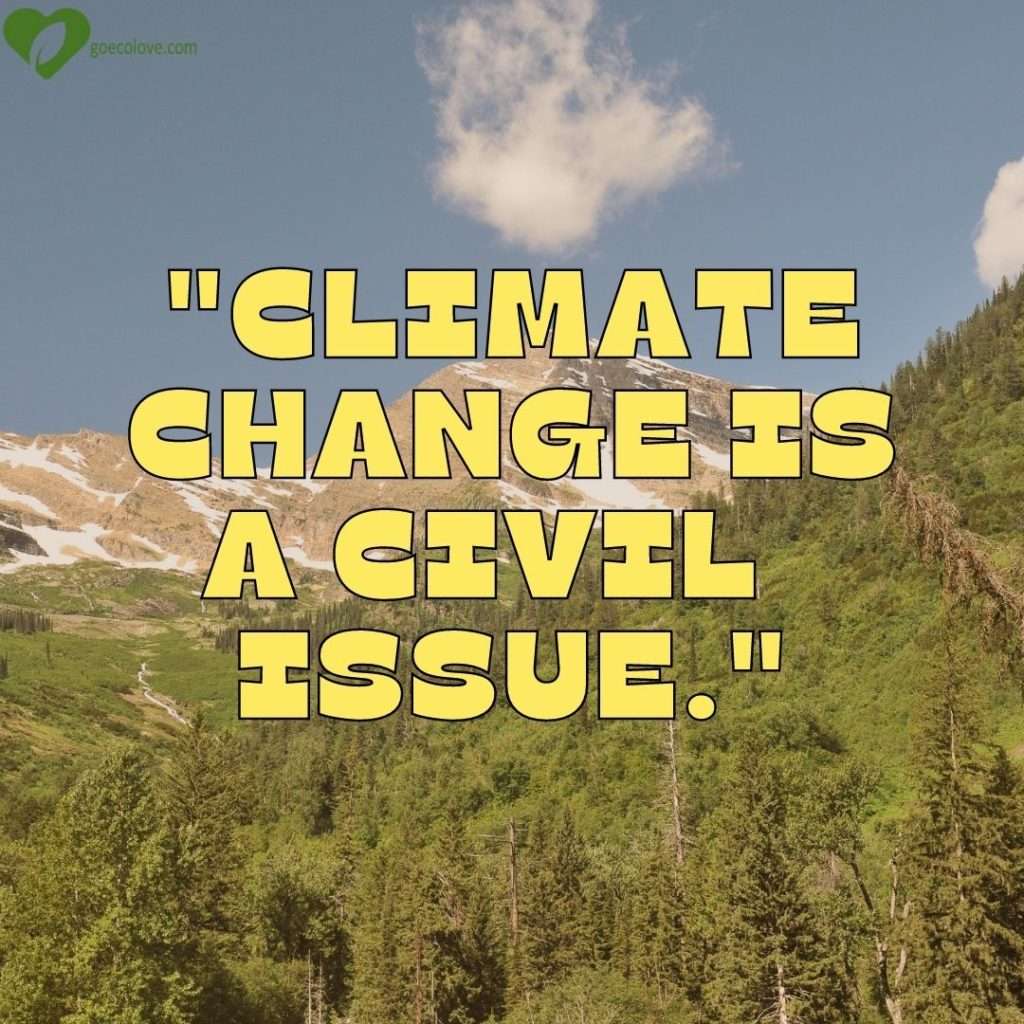Climate change refers to significant, long-term changes in the global climate.
The global climate is the connected system of sun, earth, oceans, wind, rain and snow, forests, deserts, a mixed woodland-grassland ecosystem, and everything people do.
Climate change is the changes in the usual weather found in a place. These changes depend upon how much it rains in a place usually in a year or temperature for a month or season. It is also considered as Earth’s climate or Earth’s usual temperature. Or it could be a change in where rain and snow usually fall on Earth.
Change in weather takes place in just a few hours. Usually climate changes take hundreds or even millions of years. The Earth’s average temperature is about 15 C but has been much higher and lower in recent years. There are natural fluctuations in the climate but scientists say temperatures are now rising faster.
Carbon dioxide is the main cause of human-induced climate change. It has been emitted in vast quantities from the burning of fossil fuels and it is a very long-lived gas. It means it continues to affect the climate system during its long existence in the atmosphere.
The primary cause of climate change is burning fossil fuels such as oil, gas, and coal which emits greenhouse gases into the atmosphere—primarily carbon dioxide. When burnt, fossil fuels release carbon dioxide into the air, causing the planet to heat up. This climate change is because of human activity. Other human activities, such as agriculture and deforestation, also contribute to the proliferation of greenhouse gases that cause climate change.
The main causes of climate change are:
- Humanity’s increased use of fossil fuels – such as coal, oil and gas to generate electricity, run cars and other forms of transport, and power manufacturing and industry
- Deforestation – because living trees absorb and store carbon dioxide; when they are cut, we lose this functionality of theirs.
- Increasingly intensive agriculture – which emits greenhouse gases like methane and nitrous oxide
Impacts from climate change are happening now.
Climate change may cause erosion, decline in organic matter, salinization, soil biodiversity loss, landslides, desertification and flooding. This is as a result of an imbalance between incoming and outgoing radiation in the atmosphere.
More frequent and intense droughts, storms, heat waves, rising sea levels, melting glaciers and warming oceans can directly harm animals, destroy the places they live, and people’s livelihoods and communities. As climate change worsens, dangerous weather events are becoming more frequent or severe.
These impacts extend to increase in temperature, affecting ecosystems and communities in the United States and around the world. Things that we depend upon and value like water, energy, transportation, wildlife, agriculture, ecosystems, and human health are experiencing the effects of a changing climate.
Water
Changes to water resources can have a big impact on people’s lives. In many regions, floods and water quality problems are likely to be worse because of climate change.
Food
Our food supply depends on climate and weather conditions. Although agricultural practices may be adaptable, changes like increased temperatures, water stress, diseases, and weather extremes create challenges for the farmers and ranchers who put food on our tables.
Health
Human health is vulnerable to climate change. The changing environment is expected to cause diseases like heat stress, an increase in waterborne diseases, poor air quality, and diseases transmitted by insects and rodents. Extreme weather can compound many of these health threats.
The environment
Ecosystems are also affected by climate change. Habitats are being modified, the timing of events such as flowering and egg laying are shifting, and species are altering their home ranges. Climate change is recognized as a serious threat to ecosystem, biodiversity, and health. It is associated with alterations in the physical environment of the planet Earth and affects life around the globe
Changes are also occurring to the oceans. The ocean absorbs about 30% of the carbon dioxide released into the atmosphere from the burning of fossil fuels. As a result, the ocean is becoming more acidic and marine life is affected. Rising sea levels due to thermal expansion and melting land ice sheets and glaciers put coastal areas at greater risk of erosion and storm surge.
Humans are facing the problem from climate change today, and the one who are causing these conflicts are from humans. It is impossible to stop global warming, but people still can reduce and slow down this problem.
You can reduce climate change by
- Put a price on carbon.
- End fossil fuel subsidies.
- Build low-carbon, resilient cities.
- Increase energy efficiency and use of renewable energy.
- Implement climate-smart agriculture and nurture forest landscapes.

